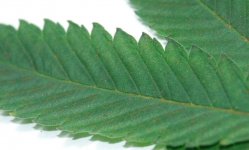Dear ICMAGs,
I have a problem here. All my plants got wiped out starting week 8. My system as follow
- Indoor DWC
- PH 6 +- 0.5
- Flowering 12th week
- Room temp - 28-30 degrees celsius.
- Hydro Solution. NPK, Mg, S, Mn, Zn, Cu, B, Mo, Ca, Fe
Symptom
My plants are going well, fast, green and strong. but suddenly....
- Leaves start to have rusty like dust which cannot be blown off. (Please see attached image)
- Water intake decrease drastically.
- Symptom looks like calcium def however, I did not change my hydro combination. The thing just strike in a sudden.
- Plant starts to dry and die from the bottom up. All this happen during flowing stage week 8.
- This sickness had spread to my vegetation room.
- Stem of the plant start to become brown.
- Stem become brittle.
- No sign of tip burning. Whole leave just dry off entirely after some time.
- No visible mites or spiders.
My approach (but failed)
Add in H2O2 from pharmacy. Using calculation (10)*(Liters)/(%of H2O2). however, the tips of my leaves starting to turn purple after some time.
Hope someone can enlighten me with a solution.
Thank you very much.




I have a problem here. All my plants got wiped out starting week 8. My system as follow
- Indoor DWC
- PH 6 +- 0.5
- Flowering 12th week
- Room temp - 28-30 degrees celsius.
- Hydro Solution. NPK, Mg, S, Mn, Zn, Cu, B, Mo, Ca, Fe
Symptom
My plants are going well, fast, green and strong. but suddenly....
- Leaves start to have rusty like dust which cannot be blown off. (Please see attached image)
- Water intake decrease drastically.
- Symptom looks like calcium def however, I did not change my hydro combination. The thing just strike in a sudden.
- Plant starts to dry and die from the bottom up. All this happen during flowing stage week 8.
- This sickness had spread to my vegetation room.
- Stem of the plant start to become brown.
- Stem become brittle.
- No sign of tip burning. Whole leave just dry off entirely after some time.
- No visible mites or spiders.
My approach (but failed)
Add in H2O2 from pharmacy. Using calculation (10)*(Liters)/(%of H2O2). however, the tips of my leaves starting to turn purple after some time.
Hope someone can enlighten me with a solution.
Thank you very much.










